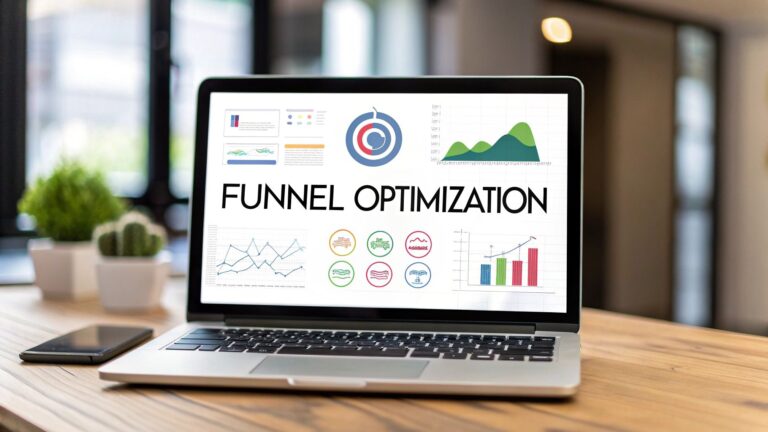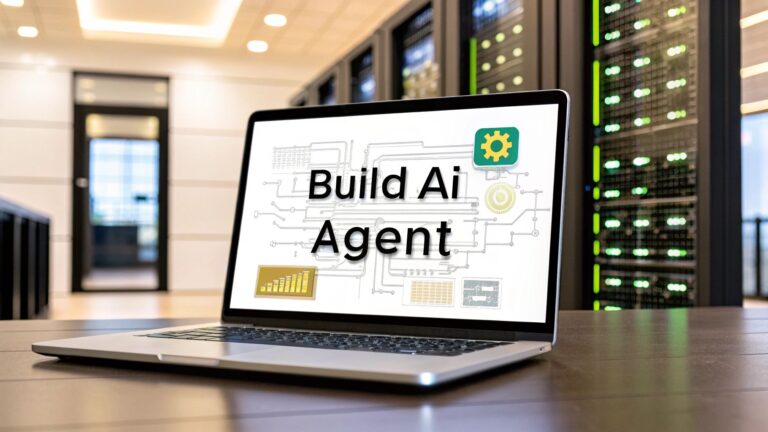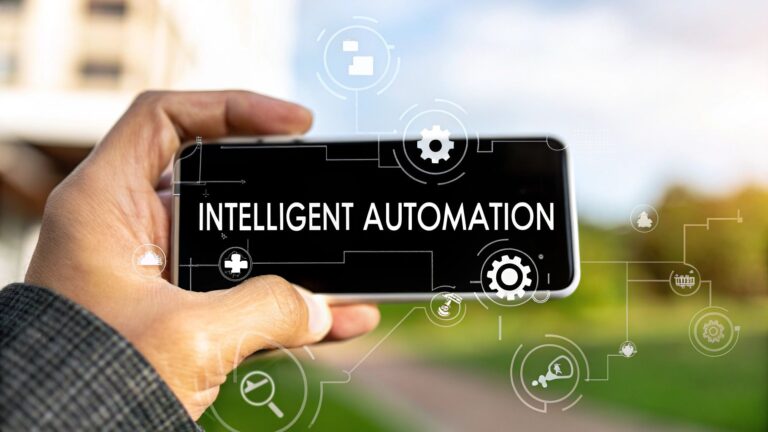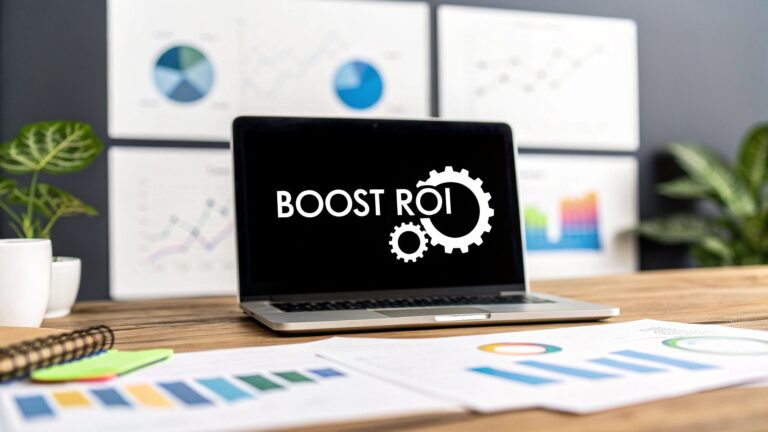A Guide to Automated Email Marketing Campaigns
Picture having a sales assistant who never sleeps. This tireless helper works around the clock, greeting every new contact, guiding interested leads through your sales funnel, and re-engaging past customers at just the right moment. That, in a nutshell, is the power of automated email marketing campaigns. These aren't your typical email blasts; they are intelligent, behavior-driven sequences sent automatically in response to specific actions your audience takes.
Understanding Automated Email Marketing Campaigns
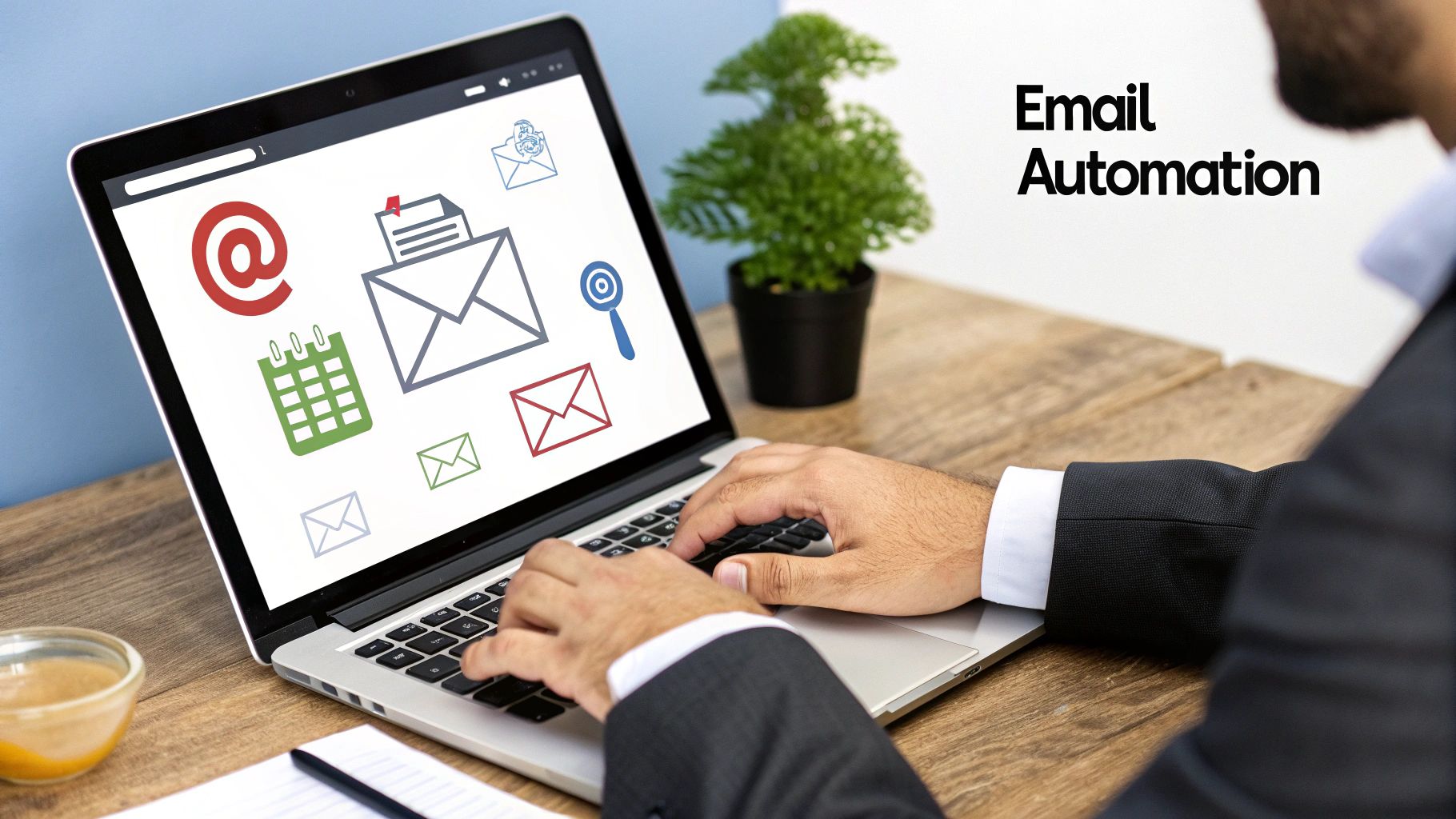
Think of a standard email newsletter like a public announcement shouted through a megaphone. Everyone within earshot gets the same message at the same time, regardless of how relevant it is to them. Automated email campaigns are the complete opposite. They're more like having a personal, one-on-one conversation with each customer, customized to their individual needs and recent activities.
These campaigns run on a simple but powerful "if-then" principle. If a user takes a specific action (the trigger), then a pre-written email or a series of emails is automatically sent (the response). This lets you communicate with subscribers with incredible timing and relevance. For a closer look at the wider world of automation beyond just email, check out this excellent guide on mastering marketing automation.
The Core Advantage: Personalization At Scale
The biggest win here is achieving personalization at scale. It's just not feasible to manually send a unique welcome email to every new subscriber the moment they sign up. Nor can you personally track down every single shopper who abandons a cart. Automation handles all of this for you.
By setting up these workflows just once, you create an evergreen system that builds relationships, nurtures leads, and drives sales on autopilot. This frees you and your team to focus on bigger-picture strategy instead of getting bogged down in repetitive tasks.
At its heart, email automation isn't about sending more emails. It's about sending the right emails to the right people at the right moments based on their own behavior.
So, how does this really stack up against the old way of doing things? Let's break it down.
Manual vs Automated Email Campaigns at a Glance
This table clearly shows the fundamental differences between sending a one-off manual email and running a continuous, automated email campaign.
| Aspect | Manual Email Blast | Automated Email Campaign |
|---|---|---|
| Timing | Sent at a specific time chosen by the marketer. | Sent immediately after a user-specific trigger. |
| Audience | Typically sent to a broad, static list segment. | Sent to individuals based on their actions. |
| Content | General message intended for a wide audience. | Highly personalized and relevant to the trigger. |
| Effort | Requires manual setup and sending for each campaign. | Set up once and runs continuously in the background. |
| Purpose | Informing or announcing (e.g., weekly newsletter). | Nurturing, converting, or re-engaging. |
Ultimately, switching from manual to automated campaigns represents a major evolution in marketing—from a one-to-many broadcast to a one-to-one dialogue. This is how you build stronger, more profitable, and lasting customer relationships.
How an Automation Workflow Actually Works
To really get your head around automated email marketing campaigns, don't think of them as a single email blast. Instead, picture a series of dominoes you've set up. One tips over, and it starts a chain reaction that unfolds all on its own, following a path you've already mapped out. This whole system is built on three simple, yet powerful, building blocks working in concert: triggers, actions, and conditions.
It's a bit like setting up a smart home. The trigger is someone ringing your doorbell after dark. The action is the porch light instantly switching on. The condition is the "after dark" part—the rule that says the light should only turn on if it's past 7 PM. Email automation runs on this very same logic, allowing you to create conversations that feel responsive and personal.
The Trigger: The Starting Gun
Every single automation has to start somewhere. That starting point is the trigger. It's the specific event that wakes up the workflow and tells it, "Okay, it's go time!" Without a trigger, your carefully crafted email sequence just sits there, waiting for a signal.
Crucially, a trigger is always initiated by a user's behavior, which is what makes the follow-up so timely and relevant.
Here are a few classic examples:
- Someone signs up for your newsletter. This is the perfect trigger for a welcome series.
- A shopper puts an item in their cart but doesn't finish the purchase. This is the cue to send an abandoned cart reminder.
- A user downloads a guide or an ebook. This can kick off a sequence that provides more information on that specific topic.
- A contact clicks a link in a previous email. This signals interest and can trigger a more targeted follow-up about that product or service.
The magic of a good trigger is its immediacy. It lets you connect with someone right in the moment they're showing interest, which is always more powerful than a generic message sent days later. This principle is a cornerstone of effective automation, and it applies far beyond just email. If you're curious about the bigger picture, you can see more on how to automate business processes across your entire operation.
The Action: The Automated Response
Once a trigger fires, the workflow immediately moves to the action. This is simply what your automation system does next. The most obvious action is sending an email, but that's just scratching the surface of what's possible.
An action is the specific task your system carries out once a trigger occurs. While sending an email is the star of the show here, modern platforms can perform all sorts of tasks to guide the customer journey.
For instance, an action could be:
- Sending a Welcome Email: The immediate handshake after a new signup.
- Adding a "Wait" Step: Telling the system to pause for a day or two before the next email.
- Tagging a Subscriber: Automatically labeling a contact based on what they did (e.g., adding a "hot-lead" tag).
- Moving a Contact to a New List: Shifting a lead from your "prospects" list over to "customers" right after their first purchase.
This flow is what turns a single interaction into a full-blown, automated conversation.
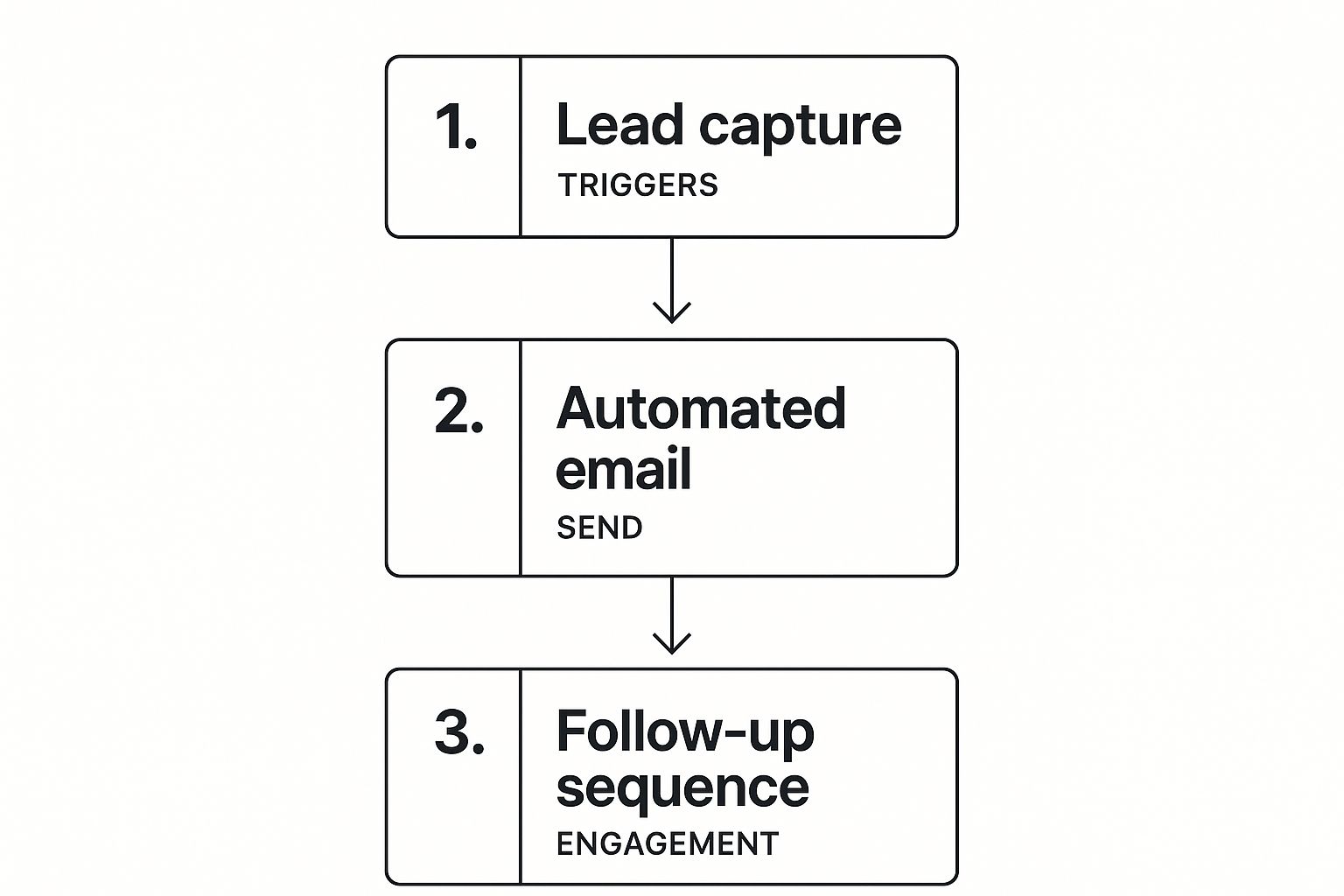
As the infographic highlights, that initial user engagement is the critical first domino that sets the entire chain in motion.
The Condition: The Decision Point
Now, this is where automation gets really smart. A condition is essentially a fork in the road for your workflow. It uses simple "if/then" logic to check something about the user and send them down a personalized path. Instead of one-size-fits-all messaging, you can adapt the journey on the fly.
Think about it this way: after you send a welcome email, you could set up a condition that asks, "Did the subscriber open it?"
- If YES: Great! They're engaged. The workflow can send them a follow-up email with valuable tips two days later.
- If NO: They might have missed it or the subject line didn't grab them. The workflow can automatically resend the same email with a new subject line 24 hours later to try again.
Conditions allow you to automate not just your messages, but your decisions. This makes your campaigns incredibly adaptive. It's this powerful combination of triggers, actions, and conditions that forms the engine behind all successful automated email marketing campaigns.
The Business Impact of Email Automation
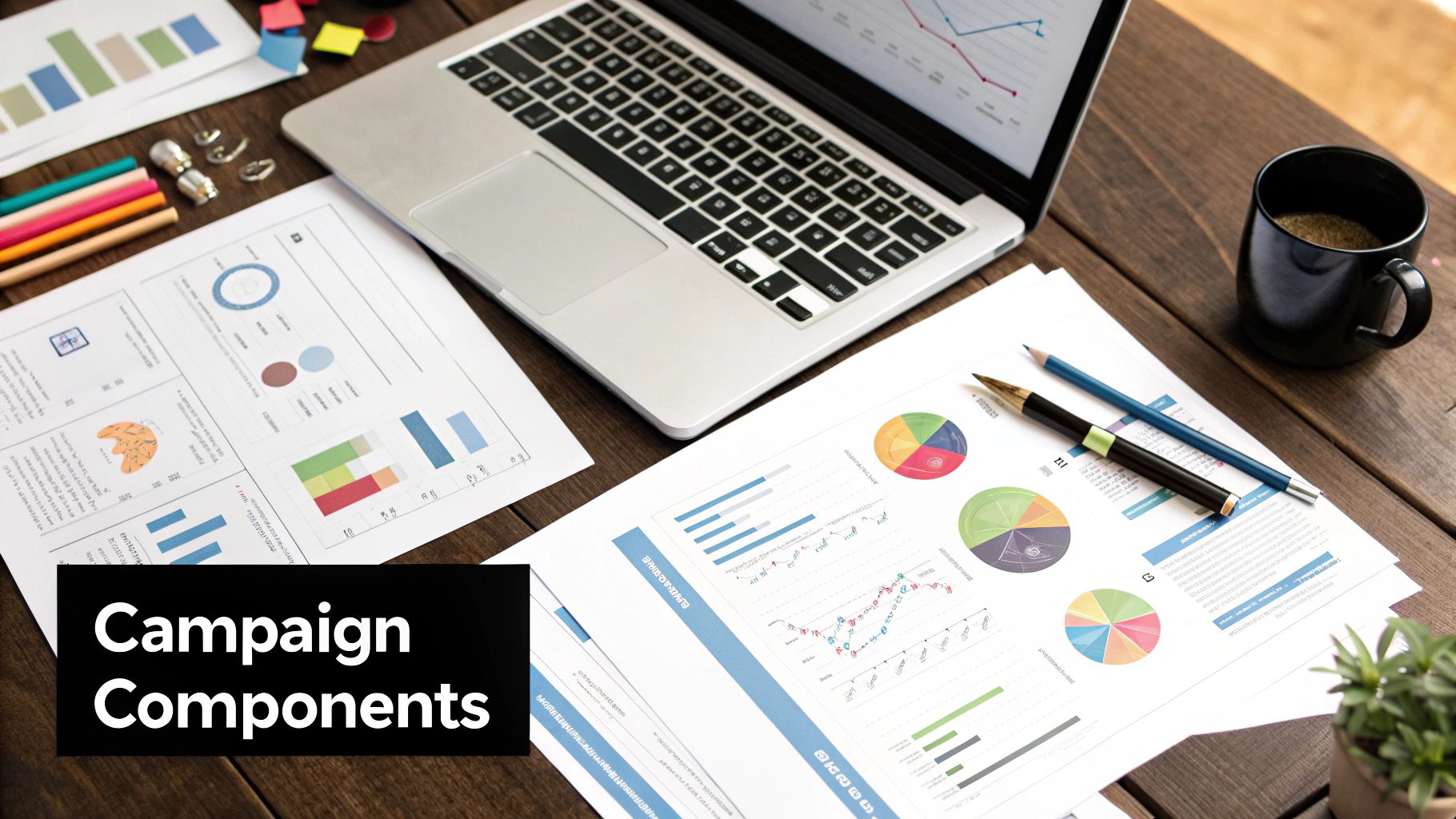
It’s one thing to talk about email automation in theory, but what does it actually do for a business? The screenshot above gives you a glimpse: for many, the investment pays for itself within just six months. The numbers tell a compelling story, one of serious efficiency and real profitability.
When you get down to it, the true magic of automated email marketing campaigns is seeing the impact on your bottom line. This isn't just about sending emails more easily. It's about building an engine that works for you around the clock, directly boosting revenue, freeing up your team, and strengthening customer relationships. The ROI here isn't a vague promise; it's a measurable result.
Think about a small online store. Before setting up automation, the owner might spend hours every week chasing down shoppers who left items in their cart. It's a slow, inconsistent process, and the follow-up often comes too late. But after implementing a simple three-part abandoned cart sequence, sales from those recovered carts could easily jump by 15% in the first month. This isn't just a convenience—it's a system that actively recaptures revenue that would have otherwise vanished.
Boosting Revenue and Sales Efficiency
Automated campaigns are a direct line to more sales because they catch customers at precisely the right moment. That perfectly timed welcome email or a relevant post-purchase follow-up doesn't just feel personal; it nudges the customer toward their next step, whether that's making their first purchase or coming back for another.
The data is pretty staggering. Even though automated emails make up just 2% of all emails sent, they are responsible for an incredible 37% of all sales that come from email. That means these targeted messages are nearly 19 times more effective at driving sales than a standard, one-off email blast. You can dig deeper into these important email marketing statistics to see just how significant the effect is.
This incredible efficiency comes down to much higher engagement. While a typical email campaign might get a 24% open rate, automated messages often hit 42%. Click-through rates see a similar leap, climbing from an average of 1.5% to over 5%.
But here’s where it gets really interesting. After the click, nearly one-third of people who open an automated email go on to make a purchase. That’s a direct, powerful link between timely, relevant automation and real money in the bank.
Reclaiming Time and Operational Resources
Beyond the direct revenue, one of the biggest wins from automation is getting back your most valuable resource: time. Every manual, repetitive task your automated workflows take over is time your team can now spend on big-picture strategy, creative projects, and talking to customers.
Just think about all the time you could save:
- Lead Nurturing: Instead of your sales team manually following up with every new lead, an automated sequence can warm them up over a few days or weeks. By the time a lead is handed off, they’re actually ready to talk.
- Customer Onboarding: A friendly welcome series can walk new users through your product, answering common questions before they even ask. This lightens the load on your support team and makes for a much smoother start for the customer.
- Feedback and Reviews: You can automatically send out emails after a purchase to ask for reviews and testimonials. This builds social proof on autopilot, with no ongoing effort.
All that reclaimed time adds up, saving money and letting your team focus on the work that truly matters.
Enabling Hyper-Personalization at Scale
Finally, automation is what makes it possible to treat every customer like an individual, even when you have thousands of them. It lets you go beyond "Hi [First Name]".
By using triggers based on what people actually do—like the pages they visit, what they’ve bought before, or how they interact with your emails—you can send messages that feel like they were written just for them.
This kind of deep personalization builds incredible loyalty and keeps customers coming back. When people get content that’s genuinely useful to them, they’re far more likely to stick with your brand for the long haul. Ultimately, automated email marketing isn't just a tool; it's a core strategy for building a healthy, growing business.
Essential Automated Campaigns You Can Build Today
It's one thing to understand the theory behind email automation, but it's another thing entirely to build your first campaign and watch it work. That's where the magic really happens. The best part? You don't need to engineer dozens of complicated workflows to see a real impact. Just a few foundational campaigns can do most of the heavy lifting for you, from welcoming new people to bringing back old customers.
Think of these examples as practical blueprints you can easily tweak for your own business. Each one has a specific job to do, whether it's making a killer first impression or winning back customers who've gone quiet.
Let's dive into the most effective automated campaigns you can set up right away.
The Welcome Series That Actually Welcomes
If you only set up one automation, make it this one. Your welcome series is arguably the most important automated campaign you'll ever create. It sets the tone for your entire relationship with a new subscriber and is your best chance to turn a fresh contact into a loyal fan.
With open rates for welcome emails hitting as high as 82%, this is not an opportunity you want to miss.
The trigger is as simple as it gets: someone subscribes to your list. From there, your goal is to onboard them, build immediate trust, and point them toward their next step.
Here’s what a solid welcome series could look like:
- Email 1 (Immediately): The instant "hello." Confirm their subscription, deliver whatever you promised them for signing up (like a discount code or an ebook), and share a little bit about your brand's story or mission.
- Email 2 (Wait 2 Days): Go beyond the initial offer. This is a great time to show off your most-loved products, share your best blog posts, or walk them through a key feature of your service.
- Email 3 (Wait 3 Days): Build some credibility with social proof. Share a few glowing customer testimonials or a quick case study. Wrap it up with a clear call-to-action, like asking them to follow you on social media or check out a specific product category.
This simple sequence takes that initial spark of interest and thoughtfully guides a new person into your world.
The Abandoned Cart Workflow That Recovers Sales
For any e-commerce store, the abandoned cart is a constant headache. It’s a fact of life that nearly 70% of online shopping carts are left behind before a purchase is made. An automated email workflow is your single best tool for clawing back a big chunk of that lost revenue.
The trigger is straightforward: a known contact adds an item to their cart but leaves your site without checking out. Your goal is to give them a gentle nudge and help them overcome whatever gave them pause.
This isn't about being pushy. A great abandoned cart email is a helpful customer service touchpoint. It reminds the shopper of the items they showed clear interest in and makes it easy for them to pick up where they left off.
A classic abandoned cart sequence usually unfolds like this:
- Email 1 (Wait 1-3 Hours): Send a simple, friendly reminder. Something like, "Did you forget something?" is perfect. Be sure to include pictures of the items they left behind and a direct link back to their cart.
- Email 2 (Wait 24 Hours): Time to address common hesitations. You can mention your return policy, offer to help via chat, or include a link to your FAQs. The goal here is to remove any friction.
- Email 3 (Wait 48-72 Hours): If they still haven't bought, you can create a little urgency or add a final incentive. This is the perfect spot to offer a small discount, like 10% off or free shipping, to help seal the deal.
Just this one automation can start boosting your revenue almost immediately.
The Re-Engagement Campaign That Wins Back Subscribers
It’s completely normal for some subscribers to go dark over time. A re-engagement campaign, often called a "win-back" campaign, is designed to wake up these dormant contacts and give them a reason to start paying attention again. After all, it's much cheaper and easier to keep a subscriber than it is to find a new one.
This campaign is triggered by inactivity—for instance, when someone hasn't opened or clicked an email in 90 days. The goal is twofold: either reignite their interest or give them a graceful exit to clean up your list, which helps your overall email deliverability.
This workflow is usually direct and to the point. You might send an email with a subject line like "Is this goodbye?" or "We miss you!" Inside, you can offer a special deal, ask for feedback on the kind of content they want, or simply provide an easy way to unsubscribe if they're no longer interested.
Integrating AI into Your Email Automation
If you think of your automated workflows as a well-oiled machine, then artificial intelligence is like installing a supercharger. It takes what’s already working and cranks the performance up to a whole new level. AI isn’t some far-off, complicated concept for tech giants anymore; it's a real, accessible tool that makes your automated email marketing campaigns far smarter and more effective.
At its core, AI analyzes massive amounts of data to make predictions and decisions that used to be pure guesswork. Imagine knowing the exact moment each person on your list is most likely to open an email. Or what if you could draft a dozen different subject lines and have an algorithm instantly pick the one with the highest chance of success? That's what AI brings to the table. It adds a layer of intelligence that makes your automation more personal, relevant, and ultimately, more profitable.
How AI Elevates Your Automation
The real magic of artificial intelligence is that it makes your automation adaptive. Instead of running a single, rigid workflow for everyone, AI helps create millions of tiny, personalized variations tailored to each individual. This naturally leads to better engagement and much stronger results across the board.
Here are a few ways AI is already making a huge difference:
- Predictive Send Times: Forget basic time-zone scheduling. AI looks at a user's past behavior—when they open, when they click—and sends your email at the precise moment they're most likely to engage.
- AI-Generated Copy and Subject Lines: Many platforms can now write compelling email copy, craft subject lines that demand to be opened, and even suggest the perfect call-to-action for your campaign goals.
- Automatic Content Personalization: AI can dynamically swap out content or product recommendations within an email for every single recipient, all based on their unique browsing history and past purchases.
These aren't just minor tweaks; they're delivering serious results. AI-driven email strategies have shown an impressive 13% increase in click-through rates and a massive 41% jump in revenue compared to traditional methods. For a deeper dive into this topic, this guide to understanding artificial intelligence in marketing is a great resource.
The Data Behind AI-Powered Email
The proof, as they say, is in the pudding—or in this case, the data. The numbers clearly show how quickly marketers are embracing these tools and the incredible results they’re getting.
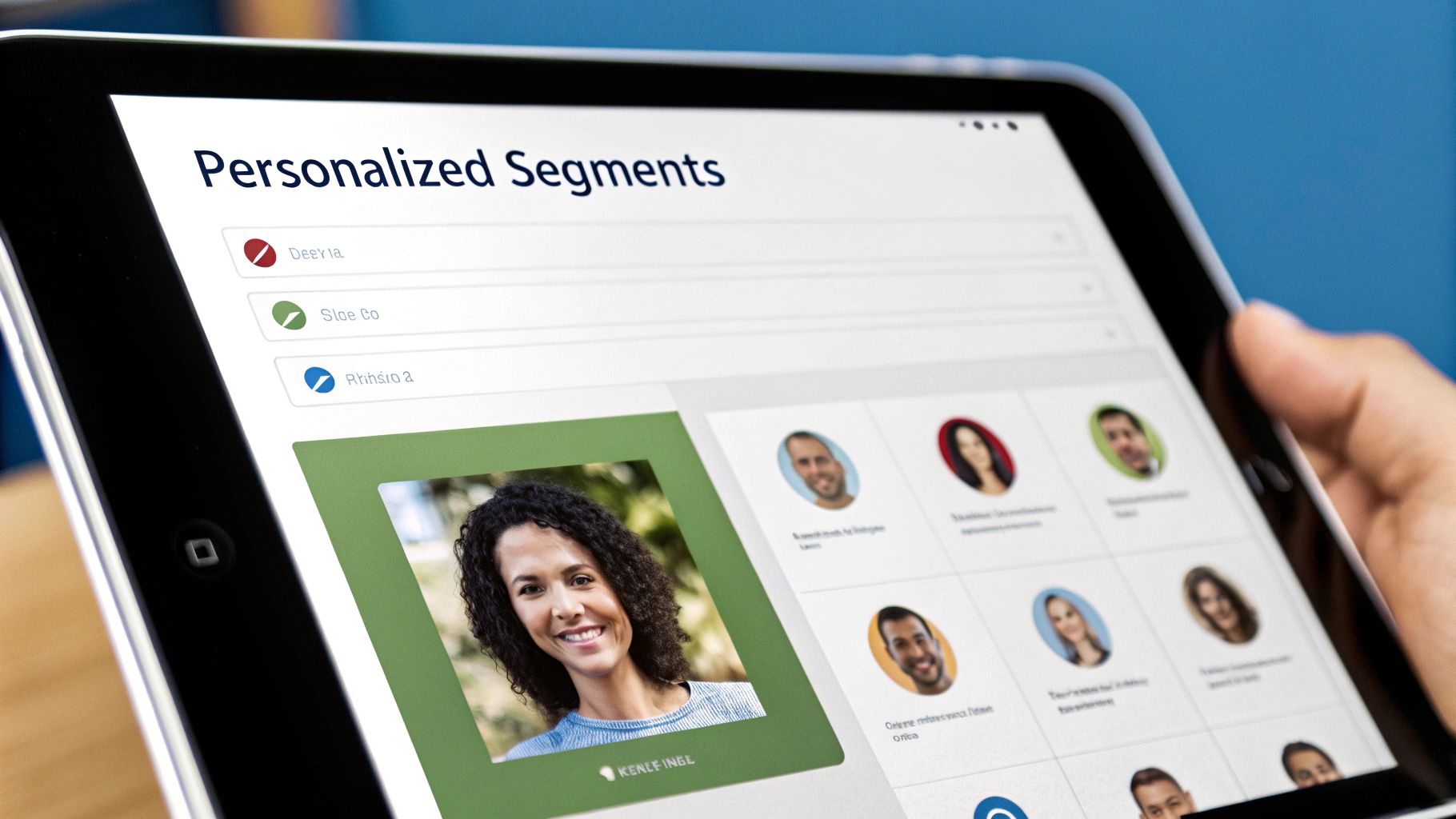
This trend is a direct response to tangible outcomes. By 2025, it's projected that around 70% of marketers in the US will be using generative AI, with 34% already using it specifically to write email copy. An even bigger majority—66%—are currently using AI to optimize their send times.
The shift is undeniable. Over half of all marketers (50.7%) now believe AI is more effective than traditional email marketing methods. It's no longer a question of if AI adds value, but how to best put it to work.
Bringing these tools into your workflow is becoming a key part of modern business efficiency. If you're looking to apply these ideas more broadly, our guide on leveraging AI for streamlined business automation offers a fantastic look at the wider strategic benefits.
In the end, AI transforms your automated campaigns from a series of pre-programmed steps into a living, breathing system that learns from and adapts to every single customer.
Best Practices for Campaigns That Actually Work
Knowing the mechanics of building an automated email campaign is one thing. Making it a consistent, high-performing powerhouse is another game entirely. These aren't just friendly suggestions; they're the battle-tested principles that separate campaigns that make a real impact from those that just end up in the digital void. Sticking to them gives every email you send the best possible shot at connecting with your audience and turning them into loyal fans.
The most successful campaigns start long before a single word is written. They begin with a genuine understanding of your audience, which is why segmentation is non-negotiable. Blasting the same message to everyone just doesn't work anymore. You need to group your contacts based on shared traits—what they've bought, where they signed up, or how they browse your site. It's no surprise that segmented campaigns consistently get higher open rates; the content is simply more relevant.
Nail the Engagement Basics
Once you know who you’re talking to, you can focus on crafting a message they can't ignore. It all starts with the subject line. Think of it as the gatekeeper to your entire email. A great one piques curiosity or promises immediate value, practically begging to be clicked.
From there, your design and copy have to deliver on that promise. Here’s what really matters:
- Design for Thumbs, Not Cursors: More than half of all emails are opened on a phone. Your design needs to be clean, responsive, and easy to navigate on a small screen. A single-column layout with big, tappable buttons is your best friend.
- Keep Your Copy Clear and Concise: People are busy. Get to the point. Use short sentences and paragraphs, and let your brand's true voice shine through to build a real connection.
- Stick to One Clear Call-to-Action (CTA): Every email should have one main goal. Make your CTA button pop with a contrasting color and use action-packed text like "Shop the Collection" or "Grab Your Guide."
Focus on Deliverability and Never Stop Improving
Even the most beautifully crafted email is worthless if it lands in the spam folder. To make sure your automated campaigns actually reach people and protect your sender reputation, you have to prioritize deliverability. A huge piece of this is learning how to reduce bounce rates with email validation tools to keep your contact list healthy and clean.
A "set it and forget it" mindset is the enemy of great automation. The best marketers are constantly tinkering, testing, and tweaking their workflows to squeeze out better results.
This is where a commitment to A/B testing comes in. You can test just about anything—the subject line, the button text, the images, even the send time. By making small, data-driven changes, you can see huge lifts in performance over time. To really dive deep, check out our complete guide to marketing automation best practices and start refining your strategy.
Frequently Asked Questions
It's completely normal to have a few questions when you're thinking about diving into automated email marketing campaigns. You might be wondering about the cost, how tricky it is to get started, or how you'll even know if it's working. Let's tackle some of the most common questions to clear things up.
Is Email Automation Expensive?
That’s a big one, but the short answer is almost always no. Most email marketing platforms today, like Mailchimp or ActiveCampaign, bake powerful automation tools right into their standard plans, even the beginner-friendly ones. Your cost usually goes up based on how many subscribers you have, not how many automated emails you send.
When you flip the script and look at the return you get—all the time your team saves, plus the extra revenue from things like abandoned cart reminders—it's easy to see how quickly it pays for itself. Think of it less like an expense and more like an investment that starts working for you from day one.
The real cost isn't in starting with automation; it's the lost revenue from sticking with purely manual email efforts. You're likely leaving money on the table every day you wait.
How Complicated Is It to Set Up an Automation?
The term "workflow" can sound intimidatingly technical, but setting one up is surprisingly simple with modern tools. They almost all use visual, drag-and-drop builders. You're not writing code; you're just connecting the dots.
It’s a lot like building with LEGOs. You grab a "Trigger" piece (like "customer signs up"), connect it to an "Action" piece (like "send welcome email"), and maybe add a "Delay" piece (like "wait 3 days"). You can honestly get your first welcome series or abandoned cart sequence up and running in less than an hour, no technical background needed.
How Do I Know If My Automated Campaigns Are Working?
This is the best part—the proof is built right in. Every email automation platform comes with a dashboard that shows you exactly how your campaigns are performing. You don't have to guess if it's working; the data tells the story.
To figure out what's resonating with your audience, keep an eye on these core metrics:
- Open Rate: Are people even opening the emails? This tells you if your subject lines are compelling.
- Click-Through Rate (CTR): Of those who opened it, how many clicked a link inside? This shows if your content is engaging.
- Conversion Rate: How many people actually completed the goal, like making a purchase? This is your ultimate measure of success.
- Unsubscribe Rate: Are people opting out? A high rate here might mean you're sending too many emails or the content isn't relevant.
Watching these numbers makes it easy to spot what’s a home run and what needs a little tweaking. From there, you can run simple tests to continuously improve your results over time.
Ready to stop wasting time on manual tasks and build a scalable growth engine? MakeAutomation specializes in creating powerful, AI-driven automation frameworks that accelerate B2B and SaaS businesses toward 7-figures. Let us help you implement systems that generate leads, boost ROI, and reclaim your valuable time.
Learn more about our automation solutions at makeautomation.co



